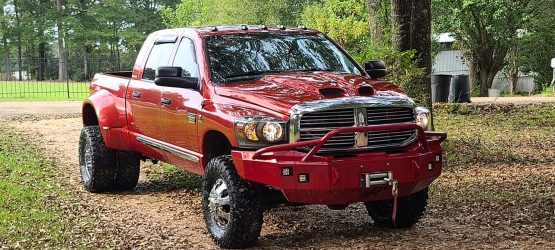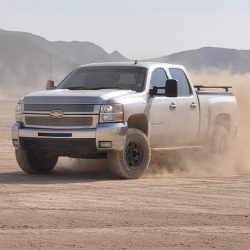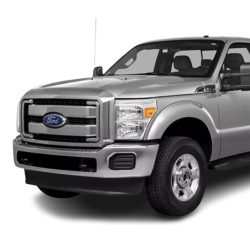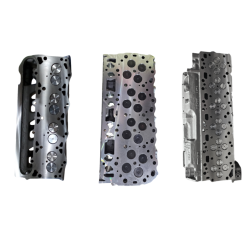Break-In
BREAK-IN OIL AND OIL FILTER MUST BE INSTALLED PRIOR TO INITIAL START-UP PROCEDURES.
What is break-in oil?
Break-in oil is a critical component of an engine rebuild. It allows controlled friction in low-load areas like piston rings.
It provides exceptional protection to areas with high loads, such as the camshaft and lifters.
An engine rebuild is a complex procedure that can take weeks or months to complete. The engine break-in process is the final step in the journey.
This ensures that all surfaces within the engine are fully mated, particularly the piston rings and valvetrain. A proper break-in is vital to a successful build. For this reason, it is crucial to choose the correct engine lubricant. Engine break-in oil is a specialized oil with a complex job.
They use conventional oils because they provide both full hydrodynamic films and allow for sufficient friction and heat to properly wear mating parts together.
Synthetic engine oils can actually prolong break-in time and potentially glaze cylinders, which will incapacitate proper ring seating. This is because synthetic engine oils inherently have lower friction coefficients.
Break-in oil vs. Regular motor oil
-
- Break-in oil is typically conventional-based lubricants containing zinc/phosphorus (ZDDP) and moly anti-wear compounds.
-
- ZDDP forms a polar attraction to surfaces in the engine and creates a sacrificial layer. This prevents metal-to-metal contact in areas where a full-fluid oil film cannot exist.
-
- Molybdenum disulfide is a sulfate-based additive that protects against corrosion and oxidation while also reducing friction. It should be noted that it’s important that break-in oil contains an aggressive detergent/dispersant package to trap contaminants and metal particles, keeping them away from engine parts.
Why do I need to use break-in oil?
-
- Because of ever-increasing limits on formulations, engine oils at your local auto parts store or big-box retailers contain low amounts of ZDDP. Experts believe that ZDDP is corrosive to emissions devices in high concentrations.
-
- Today’s spec engine oils have 30% less ZDDP chemistry than they did just 15 years ago. ZDDP is the bread-and-butter of anti-wear chemistry. For this reason, spec engine oils are not good for performance engines. In fact, they could cause your flat tappet camshaft to quickly fail. Low ZDDP levels can also negatively affect roller cams.
-
- High ramp rate, high lift camshafts, and stiffer valve springs, which are common in performance applications, can increase the load on the cam beyond what spec oils can handle.
-
- Break-in oil provides an advanced level of protection because it contains a higher quantity of additives.
-
- This brings us to the topic of intended wear — what “breaking in” actually refers to. The controlled (intended) wear inside the cylinder prevents oil from being burned off at an increased rate due to oil building up between the piston and cylinder. Break-in oil assists in the designed wear process so that regular engine oil can subsequently maintain ongoing protection of the engine.
How long do I need to use break-in oil?
-
- Use break-in oil only long enough to seat the engine. We recommended Driven racing break-in diesel motor oil. Use the correct oil based on climate temperatures. BR 30 (-20°F → 0°F ) BR 40 ( 0°F → 32°F ) DBR 15W-40 (32°F → and above ).
-
- It’s OK to use the Driven racing break-in diesel motor oil with the 6.7 Power Stroke. Use the break-in oil for only 50 miles. Allow the engine to reach full operating temperature. The abrasive wear caused by engine break-ins can increase exponentially. Therefore, it’s important to change the oil as soon as a proper break-in has occurred.
Check exhaust back pressure
-
- Verify back pressure through a scan tool or manual gauge to ensure the scan tool shows barometric pressure when the engine is off. SCT does not allow for correct back pressure. Warm up the engine and run it at a steady 2200 rpm, then read the gauge.
-
- Checking exhaust back pressure is important because a restricted exhaust system means that the exhaust system is not functioning properly which can lead to premature engine failure including but not limited to burnt valves, scored pistons, or blown head gaskets.
-
-
Engine failure caused by a restricted exhaust system is not covered under your warranty (no matter who you buy the engine from) so it is in everyone’s best interest to measure back pressure when installing. (Document on Warranty Registration)
-
Record back pressure results
-
- Never add cold water to the cooling system while the engine is running. The engine should be allowed to run at normal operating temperature.
-
- Start the engine, let it idle, and monitor oil pressure and oil temperature. Record oil pressure when cold and again at 180 degrees of oil temp. Both recordings are to be taken at idle. (Document on Warranty Registration)
-
- Never use “Tap” water as it will cause rust to the engine block. Distilled water with the correct coolant mixture that is required by the manufacturer.
-
- Though coolant may rise to operating temperature in a few minutes. If applicable, adjust tappets. If the coolant should “boil over,” stop the engine and allow it to cool, then start the process over.
EXTREMELY IMPORTANT
-
- If the engine is a 6.4 Powerstroke or a 6.6 Duramax LB7 at this time remove the dipstick and check the oil level. Because of the design, the fuel lines run under the valve cover.
-
- Fuel can enter the crankcase damaging the lower bearings which would NOT BE COVERED under warranty. Be sure to verify the oil is not “growing” on the dipstick.
-
- Checking multiple times over the course of the next few weeks can save an engine! This is a MAJOR issue that can easily be resolved if found soon enough.
-
- If the Engine is a 6.0 Powerstroke verify that you installed the proper glow plugs, 2003-2007 engines must use ZD-32 glow plugs to prevent catastrophic damage to the engine.
-
- Damage resulting from improper glow plug installation will not be covered under warranty.
-
- Retorque cylinder heads and manifolds if required by the manufacturer.
-
- Start the engine again and make a test run on the road at 30 MPH in the “drive” range or select the proper gears for standard transmissions.
-
- Periodically accelerate to 50 MPH and decelerate rapidly. Repeat this procedure at least 10 times.
-
- Applying loads to the engine for short periods of time causes increased ring pressure against the cylinder walls and helps to seat the rings. This is especially important because you are “breaking in” the engine. The rapid deceleration increases the vacuum and gives extra lubrication to the piston and ring assemblies.
-
- Driving the vehicle for approximately 25-40 miles under the above conditions will accomplish the initial break-in of rings, bearings, and mating surfaces.
CHANGE THE INITIAL BREAK-IN OIL AND FILTER AT THIS STAGE. THIS IS AT NO MORE THAN 50 MILES.
Next 500 miles
-
- For the first oil change, 15w-40 conventional or semi-synthetic is recommended. 10w-30 is recommended for the 6.7 Ford Powerstroke.
-
- Do not drive at continuous speeds for long periods; always vary your speed.
-
- Do not tow a trailer or put any heavy loads on the vehicle to avoid “lugging”.
-
- It is recommended to check oil and coolant levels daily or every 100 miles.
-
- Avoid idling for long periods which can lead to cylinder “glazing”.
After 500 miles or no more than 750 miles
-
- Change the engine oil and oil filter.
-
- Schaeffer’s 7,000 Series CK-4 oil is recommended.
-
- Check fuel and cooling system components.
-
- If applicable or recommended by the manufacturer, adjust valves and retorque cylinder heads and manifolds.
-
- Do not use full synthetic oil for the first 20,000 miles. Partial synthetic oil is approved.
-
- Do not use any GF-S oils. The use of this oil will void all warranties.
-
- The use of Rotella oil is not recommended as of December 2016.
Maintenance
-
- Perform scheduled maintenance as outlined in your vehicle’s owner manual. If you are unsure or have questions about routine maintenance, call the manufacturer.
-
- Failure to perform routine maintenance can result in engine damage that may not be covered under your warranty. Retain all records (invoices, receipts, repair orders, etc) related to service or maintenance performed on your engine or engine support system.
-
- In the event of a product failure you will be required to provide copies of maintenance records and installation invoices.
-
- Don’t forget to complete your warranty registration.
The next step, Warranty Overview, can be found here.
This information contains partial instructions and is intended to be a guide only.





